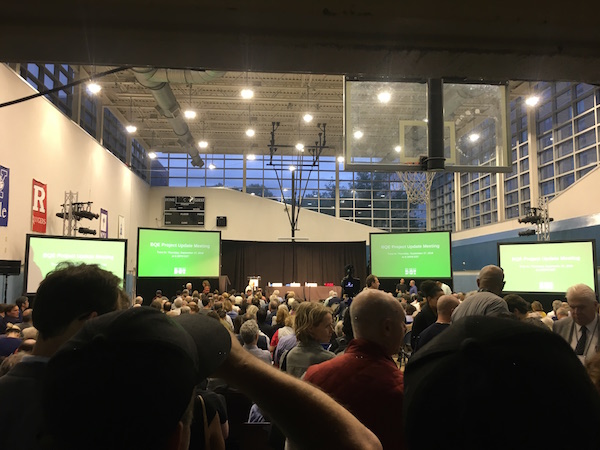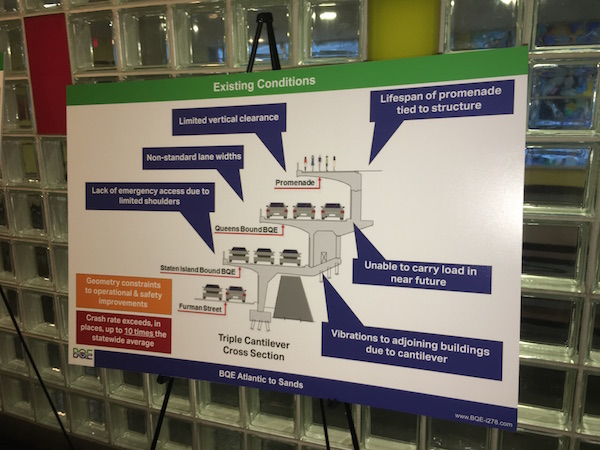The Department of Transportation (DOT) last week unveiled two possible proposals for rehabilitating a portion of the Brooklyn-Queens Expressway that stretches 1.5 miles between Atlantic Avenue and Sands street.
According to the DOT a total of 153,000 vehicles run through the BQE on a daily basis, making it one of, if not the busiest expressway in New York City. DOT commissioner, Polly Trottenberg, called this rebuild “one of the most difficult and very challenging,” project because of the amount of space surrounding the expressway. “Many routes were impossible due to infrastructure including subways and water tunnels. Huge risks when building underneath some of the most historic neighborhoods in the city,” read the DOT tunnel study from 2016.
The meeting held at the Ingersoll Houses Community Center on Myrtle Avenue in Downtown Brooklyn, drew about a thousand people, many of whom were angry about the fix suggestions.

The DOT’s “Temporary Elevated Roadway” concept would provide the greatest ability to construct a safer highway, which would be completed in six years with a $3.2-3.6 billion cost rate. The elevated roadway concept would require the complete closure of that portion of the BQE and construct a temporary six-lane roadway on the level of the Brooklyn Heights Promenade, the very popular walkway that would be closed for as long as six years if the proposal goes through.
The other scenario would be to make repairs lane-by-lane, without having to create the elevated roadway on the Promenade. According to the DOT this option would take up to eight years, increase traffic and the cost could be anywhere from $3.4 to more than $4 billion.
City Council Member Stephen Levin (D-Northern Brooklyn, Boerum Hill), whose district sits on the portion of the BQE and the Promenade, spoke out about the proposals, “Closing the Promenade is distressing, but adding more time to the revamp is also distressing, since it will have a ripple effect. This goes beyond the scope of our neighborhood,” Levin said.
Regardless of which scenario the DOT goes with significant repairs and replacements will have to be made by 2026 when vehicle-weight limits and truck diversions will be necessary because of deterioration to the structure.










